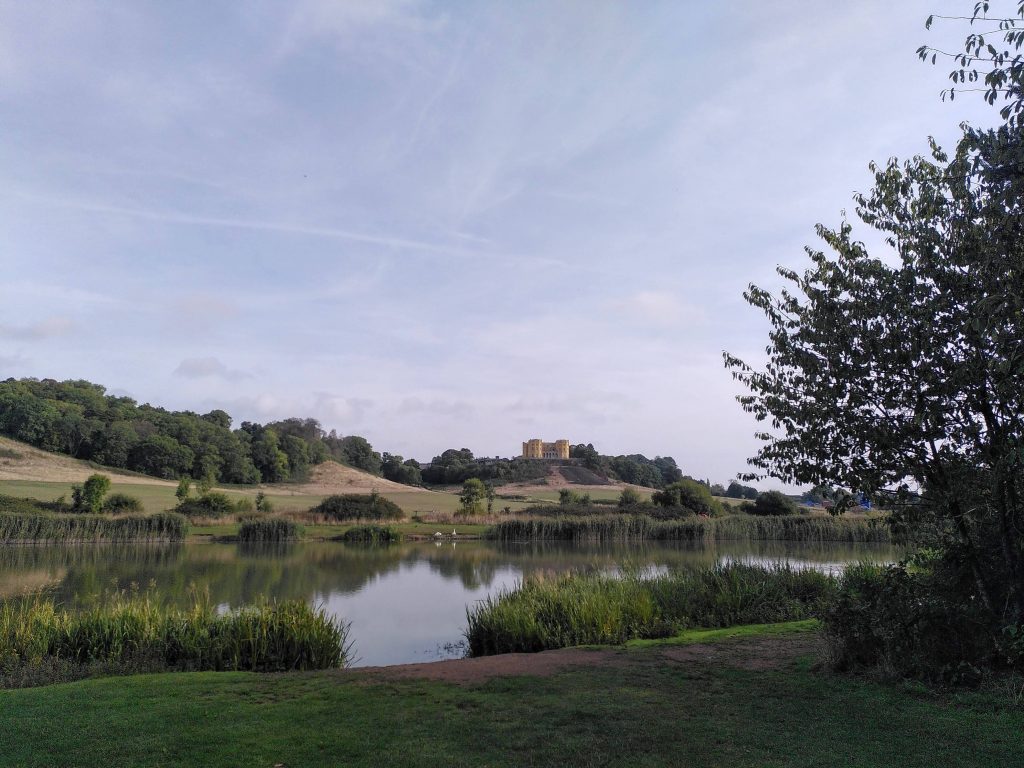Did you know that in the past, what is now the 108 hectares (270 acres) of Stoke Park has been home to, amongst other things, the infrastructure for state-of-the-art medieval rabbit hunting, a formal landscape garden for the nobility of the 18th century, and Second World War guns protecting Bristol during the Blitz?
Underpinned by Triassic and Jurassic rocks the seemingly natural parkland that we see now has actually been shaped by humans.
Medieval
In the middle ages, the land of Stoke Park was used by local communities for sustenance. Evidence of the medieval field system – narrow rectangular fields – as well as pillow mounds can be seen in various locations in the park. Pillow mounds are man-made rabbit warrens, consisting of a flat topped mound with artificial burrows and tunnels, created to encourage rabbits to populate the area so they could be easily caught for food.
There is little information in the historical archive of the specific land use, or rights of commoners in this time. Records show that the Berkeley family – arguably the people who had the biggest influence on shaping the Stoke Park we see today – originally gained possession of property in the area – Stoke Gifford House – in the first half of the 14th century. However, prior to the 18th century, there is no evidence of the parkland being enclosed.

16th century
Stoke House, in its present location on top of Purdown, was built in the 16th Century by Sir Richard Berkeley. It was replaced in the 18th century by the yellow Dower House, which still dominates the views as you leave Bristol by the M32 today.
18th century
Much of the park’s current landscaping is a result of the mid 18th century garden created by Norborne Berkeley – a British courtier and MP – and leading landscape gardener of the time Thomas Wright.
In keeping with the fashions of the time, the garden included terraces, formal gardens and beautiful woodland walks. In 1986, Stoke Park was added to the National Heritage List for England, in the Park and Garden category, recognising Thomas Wright’s skillful planning and the garden’s significance as an example of the landscape fashions of its time.
The woods that you see today – Long Wood, Hermitage Wood, Barn Wood – may seem like natural woodland, but look closely as you travel through and you’ll see plenty of subtle – and not so subtle – evidence of human design, from the meandering routes of the paths, to the tunnels which would have once traversed babbling brooks, and the “saloon” – a large circular clearing – in Hermitage Woods.
A more obvious monument from the era, due to both its size and prominent position on Star Hill to the west of the Dower House, is the great stone Obelisk. This stone monument was built in memory of Lady Elizabeth Somerset, daughter of Charles Noel Somerset, 4th Duke of Beaufort, and Elizabeth Somerset, sister of Norborne Berkeley. Damaged by lightning on two occasions, this monument is only partially restored compared to its original form.
Another monument from the era is the memorial to the 4th Duke of Beaufort, who took over management of the estate with his wife, Elizabeth, when Norborne Berkely travelled to the USA to become the governor of Virginia. This monument is located at the edge of Barn Wood, to the north east of the Dower House.
20th century
From 1908 through to 1997, Stoke Park estate housed a hospital for residents with mental health conditions, referred to as the Stoke Park Colony. Within living memory for many local residents, the Glenside Museum in Stapleton houses information and artefacts about the hospital and the people who lived there.
During this time, the park also served as a hospital for wounded World War II soldiers, and was the location of a gun battery, whose concrete remains can still be seen on the western edge of the park. As a Scheduled Monument, this is one of the best preserved gun battery sites from WWII, providing an insight into their form and function, and acting as a symbol of Bristol’s defensive position in the War.
Dominating the skyline on the western side of the park, behind the gun battery, is the Telecommunication Tower, built in 1970. While perhaps the most dominant aspect of the landscape is the M32, which cut through the park when it was built in the 1960s and 70s.
Today
The Park is owned and managed by Bristol County Council as a resource for local communities and a site of nature conservation interest: a protected area of importance to wildlife.
Find out more about its ecology and land uses today.
[link to other sections of SPCG website]
For more information:
Join Steve England, Bristol conservationist, horticulturist and historian, at one of his Stoke Park events
Read Bristol City Council’s leaflet and map of Stoke Park (PDF) or the Council’s website page on Stoke Park
Visit Glenside Museum to find out more about the Stoke Park Colony
Learn about the significance of Purdown gun battery as a scheduled monument